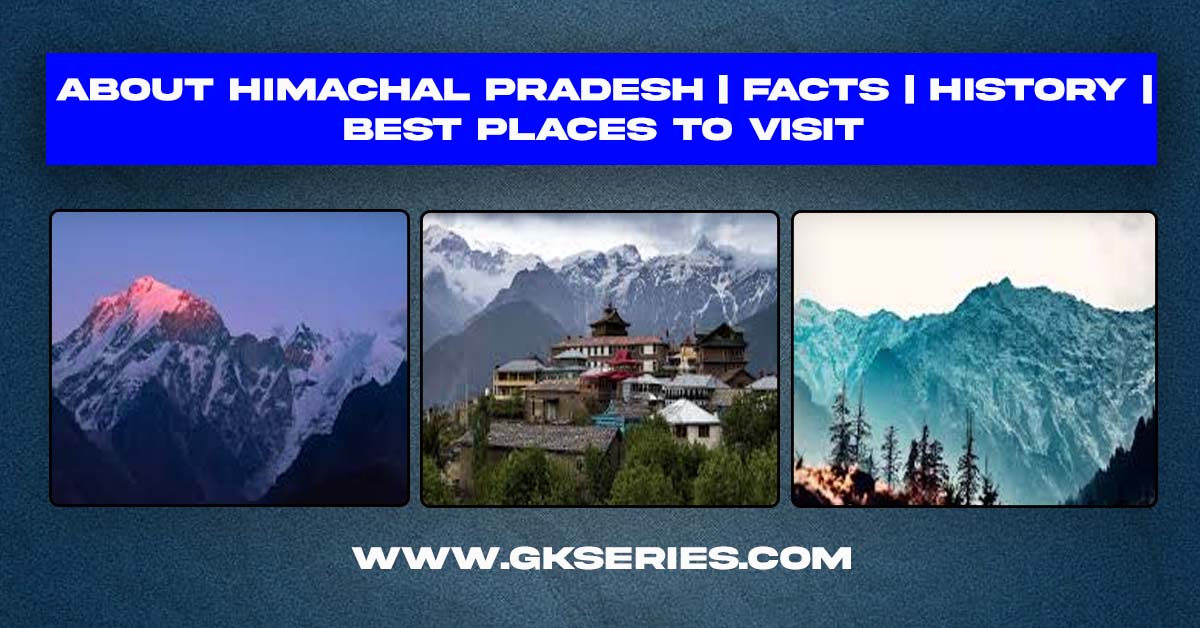
In this article, we provide comprehensive information about the geography, history, population, and top tourist destinations of Himachal Pradesh. Himachal Pradesh is a state in northern India, known for its breathtaking natural beauty, serene landscapes, and vibrant cultural heritage. Known for its stunning landscapes, the state boasts snow-capped mountains, lush green valleys, gushing rivers, and charming hill stations like Shimla, Manali, and Dharamshala.
| About: | Himachal Pradesh is a state in the northern part of India. Situated in the Western Himalayas, it is one of the thirteen mountain states and is characterised by an extreme landscape featuring several peaks and extensive river systems. Himachal Pradesh, the northernmost state of India, shares its northern boundary with Jammu and Kashmir to the north, Punjab to the west, Haryana to the southwest, Uttarakhand to the southeast, and a very narrow border with Uttar Pradesh to the south. It also shares an eastern border with the Tibet Autonomous Region in China. It can widely be referred to as ‘Dev Bhoomi’, which translates into ‘Land of Gods.’ Other terms referring to it include ‘Veer Bhoomi which means ‘Land of the Brave’.’ Himachal Pradesh consists of valleys through which flow many perennial rivers. Himachal Pradesh is spread across valleys with many perennial rivers flowing through them. Agriculture, horticulture, hydropower, and tourism are important constituents of the state’s economy. The hilly state is almost universally electrified, with 99.5% of households having electricity as of 2016. The state was declared India’s second open-defecation-free state in 2016. According to a survey of CMS-India Corruption Study in 2017, Himachal Pradesh is India’s least corrupt state. |
| History & Geography: | Himachal situated in the heart of the western Himalaya, identified as “Dev Bhumi” and is believed to be the abode of Gods and Goddesses. The entire State is punctuated with stone as well as wood temples. The rich culture and traditions have made Himachal unique in itself. The shadowy valleys, rugged crags, glaciers and gigantic pines and roaring rivers and exquisite flora and fauna compose the symphony that is for ever Himachal. Himachal Pradesh came into being as a Union Territory in April 1948 as a result of integration of 30 princely States spread over 27,000 sq.km. In 1954, when another C”class state of Bilaspur merged in Himachal Pradesh, its area increased to 28,241 sq.km. The position remained unchanged till 1966. On re-organisation of the State, the hilly areas of Punjab were merged with the State, increasing its size to 55,673 sq.km. Himachal Pradesh today is quoted as a successful model of not only hill area development but also for having realised development in education, health and social services. |
| Economy: | Agriculture being the main occupation of the people of Himachal Pradesh has an important role in the economy of the State. It provides direct employment to about 69 per cent of the main working population. There is a wide range of agro-climatic conditions endowed by nature to this precious State, which has been successful in enabling the farmers to cultivate innumerable varieties of fruits ranging from temperate to sub-tropical. The major fruits cultivated include apple, pear, peach, plum, apricot nut and some citrus fruits like mango, litchi, guava and strawberry. The scheme for an integrated development for horticulture is being implemented with a total budget allocation of Rs.80 crore during the tenth five-year plan. |
| Region: | North India |
| Capital: | Shimla |
| Largest City: | Shimla |
| Country : | India |
| Language: | Hindi & Pahari |
| Population: | 68,56,509 |
| Major Attractions to Visit: | 1. Shimla 2. Manali 3. Dharamshala and McLeodganj 4. Dalhousie 5. Spiti Valley 6. Kasauli 7. Kullu 8. Chamba 9. Kasol and Parvati Valley 10. Tirthan Valley 11. Kangra Valley 12. Hampta Pass 13. Narkanda 14. Bir Billing |





